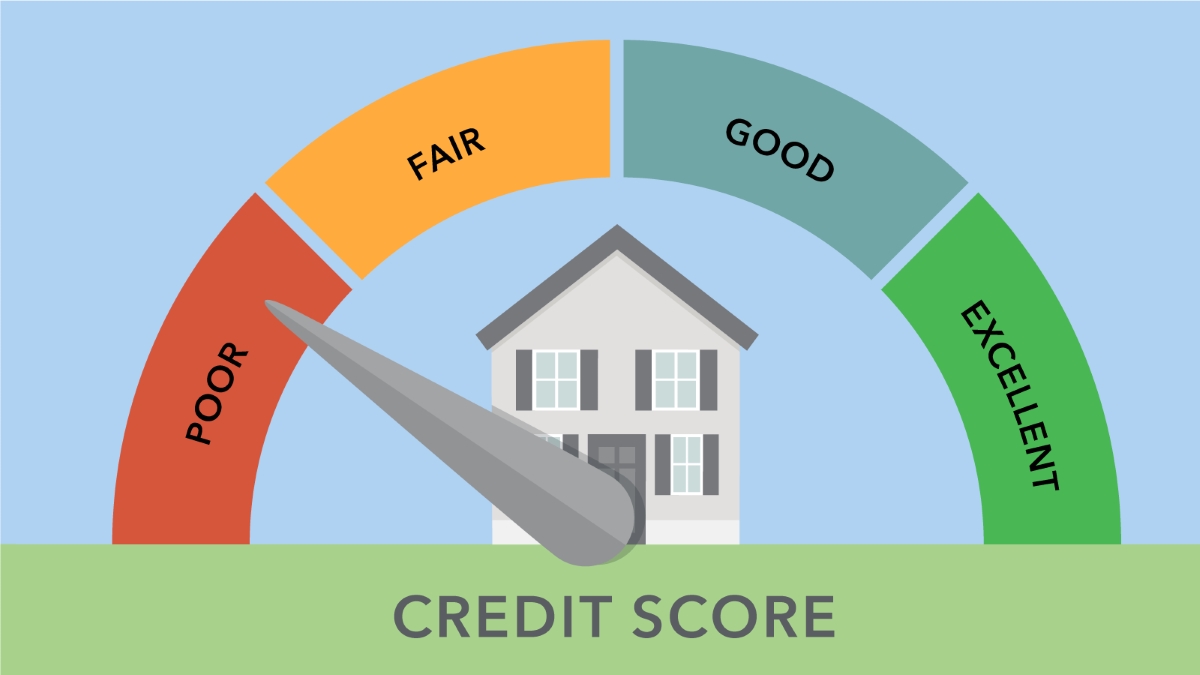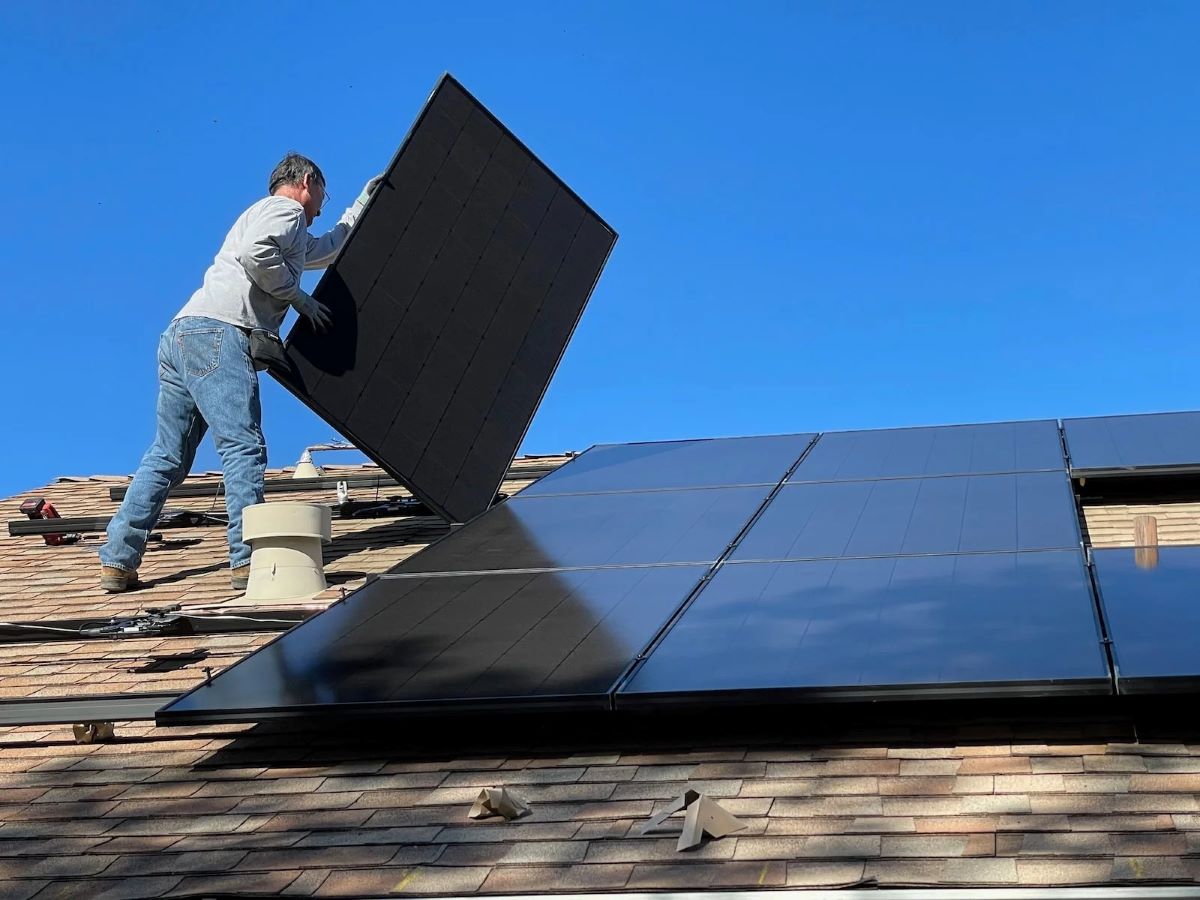

Finance
How Does The Idaho Solar Tax Credit Work
Published: January 10, 2024
Discover how the Idaho solar tax credit works and take advantage of financial incentives to save on your renewable energy investment.
(Many of the links in this article redirect to a specific reviewed product. Your purchase of these products through affiliate links helps to generate commission for LiveWell, at no extra cost. Learn more)
Table of Contents
Introduction
Welcome to our comprehensive guide on how the Idaho Solar Tax Credit works. In recent years, there has been a significant push towards renewable energy sources, and solar power has emerged as a popular and sustainable option. To encourage individuals and businesses to invest in solar energy, many states have implemented solar incentives, including tax credits.
Idaho, known for its abundant sunshine, has taken steps to promote solar energy adoption through the Idaho Solar Tax Credit. This program offers financial incentives to residents and businesses for installing solar energy systems on their properties. By taking advantage of this tax credit, individuals and companies can not only reduce their carbon footprint but also enjoy financial benefits in the form of tax savings.
Understanding how the Idaho Solar Tax Credit works is crucial for anyone considering going solar in the state. In this guide, we will provide an overview of the program, discuss eligibility requirements, explore the calculation of the tax credit, explain the application process, and highlight other considerations to keep in mind. Whether you are a homeowner or a business owner, this information will help you navigate the solar tax credit program with confidence.
Before we delve into the specifics, it’s essential to note that while this guide offers valuable insights, it’s always a good idea to consult with a tax professional or financial advisor for personalized advice. The rules and regulations surrounding tax credits can be intricate, and seeking professional guidance ensures that you make the most of the incentives available to you.
Now, let’s dive into the world of solar tax incentives and discover how the Idaho Solar Tax Credit can benefit you!
Overview of Solar Tax Credit
The Idaho Solar Tax Credit is a financial incentive designed to encourage the adoption of solar energy systems by providing tax benefits to eligible individuals and businesses. This tax credit allows you to reduce your Idaho state income tax liability by a certain percentage of the costs associated with installing a solar energy system on your property.
The solar tax credit is a dollar-for-dollar reduction in the amount of state income tax you owe. This means that if you qualify for a $5,000 tax credit, you can subtract that amount from your total tax bill. It is important to note that the solar tax credit is non-refundable, which means it can only be used to offset your tax liability for the tax year in which you claimed the credit. However, any excess credit that you cannot use in a given year can be carried forward for up to 14 years.
The Idaho Solar Tax Credit is available for both residential and commercial properties. This means that homeowners, landlords, and businesses can all take advantage of this incentive. Additionally, unlike some other renewable energy incentives, there is no maximum credit limit for solar installations in Idaho. This means that the potential tax savings can be quite significant, depending on the size and cost of your solar energy system.
It’s important to keep in mind that the Idaho Solar Tax Credit is subject to available funding. The total amount of credits available each year is capped at a certain limit. Once that limit is reached, no additional credits will be issued for that year. Therefore, it’s advisable to act promptly if you are interested in claiming the solar tax credit.
Now that we have a general understanding of the Idaho Solar Tax Credit, let’s explore the eligibility requirements to determine if you qualify for this incentive.
Eligibility Requirements
In order to qualify for the Idaho Solar Tax Credit, there are certain eligibility requirements that you must meet. These requirements ensure that the tax credit is granted to individuals and businesses who have made a genuine investment in solar energy. Here are the key eligibility criteria:
- You must be a resident of Idaho or a business operating within the state.
- The solar energy system must be installed on property owned or leased by the taxpayer.
- The solar energy system must be new and not previously installed or used.
- The system must meet all applicable local building codes and regulations.
- The system must be listed as eligible by the Idaho Public Utilities Commission.
- The installation must have been completed by a qualified solar contractor.
- The taxpayer must have documentation of the costs associated with the solar energy system installation.
These requirements ensure that the tax credit is given to those who have genuinely invested in solar energy and have followed the necessary guidelines for installation. It’s important to note that leased systems are also eligible for the tax credit, as long as the taxpayer can provide proof of the lease agreement.
Additionally, it’s worth mentioning that the Idaho Solar Tax Credit is available for residential properties, commercial properties, and agricultural properties. This means that homeowners, businesses, and farmers can all take advantage of this incentive to offset their Idaho state income tax liability.
Now that we are aware of the eligibility requirements, let’s move on to understanding how the tax credit is calculated, which is a crucial step in estimating the potential tax savings.
Calculation of Tax Credit
The calculation of the Idaho Solar Tax Credit is based on a percentage of the total costs associated with the installation of a solar energy system. The tax credit amount is determined as follows:
- Residential Properties: The tax credit is equal to 40% of the total costs, up to a maximum credit of $5,000 per installation.
- Commercial and Agricultural Properties: The tax credit is equal to 20% of the total costs, up to a maximum credit of $20,000 per installation.
It’s important to note that the tax credit is calculated based on the total costs incurred, which includes the cost of solar panels, inverters, mounting equipment, and any other materials or labor necessary for the installation. However, it does not include any federal tax incentives or grants received for the same project.
For example, let’s say you own a residential property and you installed a solar energy system with a total cost of $15,000. In this case, your tax credit would be calculated as 40% of $15,000, which is $6,000. However, since the maximum credit for residential properties is capped at $5,000, you would be eligible to claim a tax credit of $5,000.
Similarly, for commercial and agricultural properties, if the total cost of the solar energy system installation is $100,000, the tax credit would be 20% of $100,000, which is $20,000. However, since the maximum credit for these properties is also capped at $20,000, you would be eligible to claim the maximum tax credit of $20,000.
It’s important to keep in mind that the tax credit cannot exceed your Idaho state income tax liability for the given year. If your solar tax credit exceeds your tax liability, you can carry forward the unused credit for up to 14 years.
Now that we understand how the tax credit is calculated, let’s move on to the application process for claiming the Idaho Solar Tax Credit.
Application Process
Applying for the Idaho Solar Tax Credit requires following specific steps to ensure that your application is complete and accurate. Here is an overview of the application process:
- Installation and Documentation: Firstly, you need to have a solar energy system installed on your property by a qualified solar contractor. Make sure to keep all documentation related to the installation, including invoices, receipts, and any other relevant paperwork.
- Complete Form 61: To claim the Idaho Solar Tax Credit, you need to complete and submit Form 61, also known as the Idaho Solar Tax Credit Certification. This form can be obtained from the Idaho State Tax Commission’s website or by contacting their office directly.
- Attach Required Documentation: Along with Form 61, you must attach copies of all relevant documentation, such as invoices, receipts, and proof of ownership or lease agreement for the property where the solar energy system is installed.
- Submit the Application: Once you have completed Form 61 and gathered all the required documentation, you can submit your application to the Idaho State Tax Commission. It’s advisable to make copies of all the documents for your records.
- Claim the Credit on Tax Return: When filing your Idaho state income tax return for the year in which you claimed the solar tax credit, you need to report the credit amount on the appropriate line of the tax return. Consult the instructions provided with the tax return form or seek assistance from a tax professional if you need guidance.
It’s important to note that applications for the Idaho Solar Tax Credit must be submitted by April 15th of the year following the completion of the solar energy system installation. Late submissions may be subject to penalties or rejection.
Once your application is submitted, the Idaho State Tax Commission will review the information provided and verify the eligibility of the solar energy system and the claimed costs. If approved, the tax credit will be applied to your Idaho state income tax liability for the respective tax year.
Now that we have covered the application process, let’s explore some other considerations to keep in mind when considering the Idaho Solar Tax Credit.
Other Considerations
While the Idaho Solar Tax Credit offers significant financial benefits for those who invest in solar energy systems, there are some additional considerations that you should keep in mind:
- Federal Tax Incentives: In addition to the Idaho Solar Tax Credit, there may be federal tax incentives available for solar energy systems, such as the federal Investment Tax Credit (ITC). These incentives can further enhance your potential savings and should be explored in conjunction with the state tax credit.
- Consult a Tax Professional: The tax laws and regulations surrounding solar tax credits can be complex, and it’s crucial to consult with a tax professional or financial advisor to ensure that you understand the full implications of claiming the credit and to maximize your potential savings.
- Available Funding: As mentioned earlier, the Idaho Solar Tax Credit is subject to available funding. It’s advisable to act promptly and inquire about the availability of credits for the year in which you plan to install a solar energy system.
- System Maintenance and Performance: While the tax credit provides financial incentives for installing a solar energy system, it’s important to consider the ongoing maintenance and performance of the system. Regular maintenance and monitoring of your solar panels will help ensure optimal performance and maximize the benefits of your investment.
- Local Regulations and Permits: Before installing a solar energy system, it’s essential to research and comply with all local building codes, regulations, and permit requirements. Failure to do so may result in additional costs or complications down the line.
By considering these aspects and seeking professional guidance, you can make informed decisions regarding the installation and utilization of a solar energy system, especially in relation to the Idaho Solar Tax Credit.
Now, let’s conclude our guide on the Idaho Solar Tax Credit.
Conclusion
The Idaho Solar Tax Credit is a valuable incentive that aims to promote the adoption of solar energy systems in the state. By offering tax credits to eligible individuals and businesses, Idaho encourages the use of renewable energy and reduces the reliance on fossil fuels.
In this comprehensive guide, we have covered the key aspects of the Idaho Solar Tax Credit. We discussed the overview of the program, including its purpose and the potential benefits it offers. We explored the eligibility requirements, emphasizing the need to be a resident or business owner in Idaho and meet certain installation criteria.
We then delved into the calculation of the tax credit, explaining that the credit amount is based on a percentage of the total costs associated with the solar energy system installation. Residential properties can receive a 40% credit up to $5,000, while commercial and agricultural properties can receive a 20% credit up to $20,000.
The application process was outlined, emphasizing the importance of completing Form 61, attaching the necessary documentation, and submitting the application by the designated deadline. We also highlighted the need to report the credit amount on your Idaho state income tax return.
Finally, we discussed other considerations, including the potential for federal tax incentives, the importance of consulting with a tax professional, the availability of funding, and the ongoing maintenance and compliance requirements of solar energy systems.
By understanding the Idaho Solar Tax Credit and taking advantage of this incentive, you can not only contribute to a cleaner environment but also realize significant financial savings. Offset your tax liability, reduce your carbon footprint, and embrace the benefits of solar energy in Idaho.
Remember, while this guide provides valuable information, it’s always wise to seek personalized advice from professionals to ensure that you make the most informed decisions regarding your specific circumstances. Start exploring the Idaho Solar Tax Credit now and reap the rewards of going solar!














